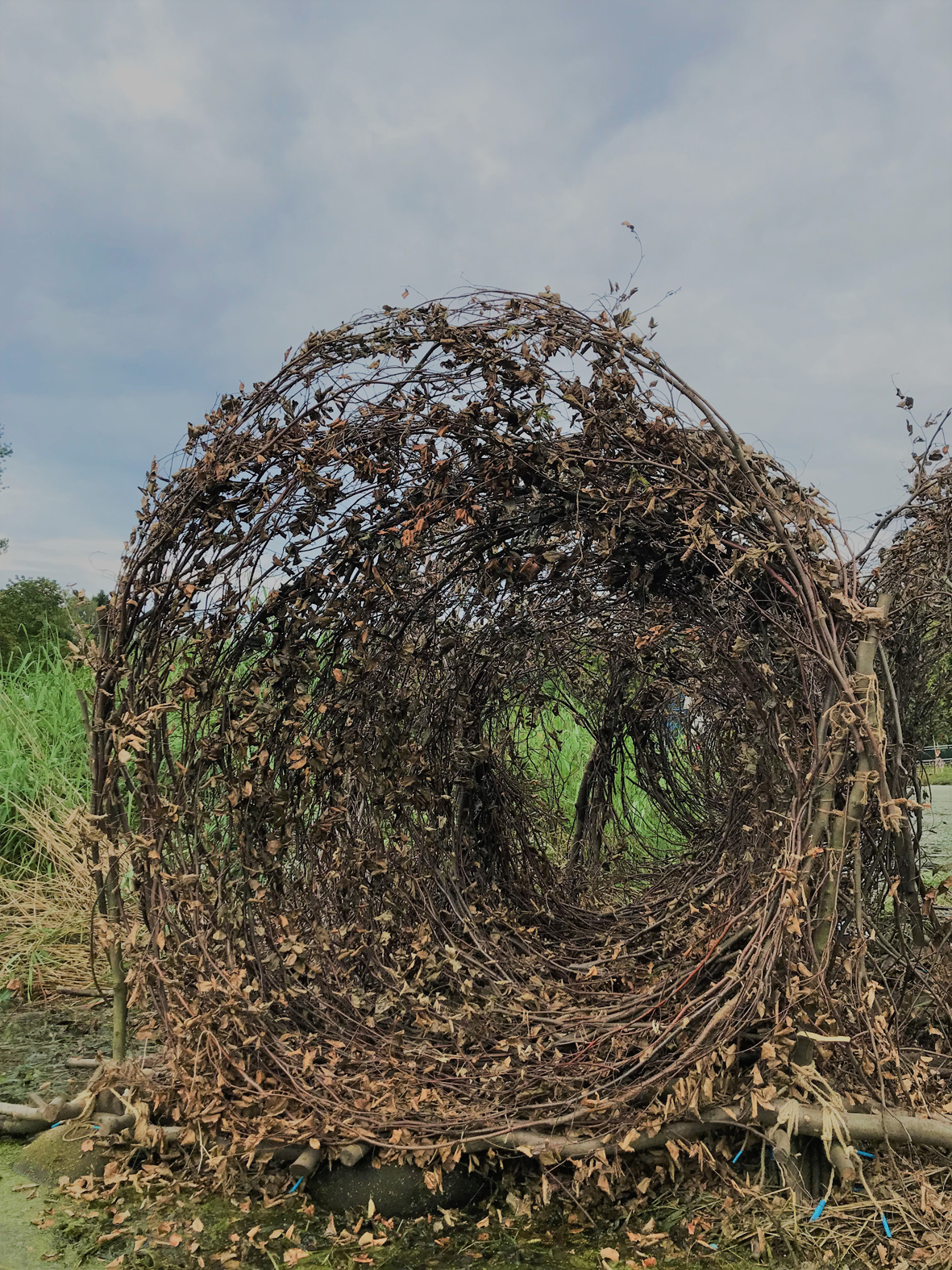animalesque
Thorough understanding and working over the systemic nature of building process, primitive materials and elements such as branches, soil, rope, bags, are organized and arranged in serialized components that will conform a chain of interconnected systems, that ultimately gave form to the Nest. Each day on the construction of the nest is about designing and materializing the environmental complexity. A bottom-up process ruled by interconnected building steps where no final form has been previously defined, but on the contrary, has emerged from a disciplined and coherent process of system making.
Animalesque is a 10 days workshop that took place in Floating University, Berlin. Floating University is an independent organization that is located in an active water basin. Animalesque workshop has taken place under the Climate Care Festival that Floating University has organized to bring attention to changing the natural environment and climate change. The Animalesque Nest is more than just a metaphor about how birds build their homes. It is about the collective creation of a place for nesting animal, vegetal or algae life in the basin.





Designing systems that work with nature / holistic systems design is to question
how design is challenged holistically, acknowledging how design is part of a network
ecological and social processes of the water basin. Sensorial learning is for engaging
senses to situate ourselves in the wetland, learn from it and experiment with materials and building tecniques. Interdisciplinary learning is to be exposed to different backgrounds
ranging from research, technology, art and design to navigate throughout the history
of the lagoon and speculate about futures where an Animalesque Utopia is possible.
We have gathered as a team and cross-fertilized our ideas with the scientists, artists, thinkers, and designers. The overall design form is a result of discussions under the light of idea exchange. The collected branches gave a strong idea about structural guidance. The bridge found on the site has created the center of the human axis. The plants next to the bridge gave us a place to extend the design in smaller-scale units where animal, vegetal and algae life can take over. With sketches and photographs, the unplanned building process has been systematized for possible further prototypes.
http://animalesque.aaschool.ac.uk/archive2019/the-nest/
We have gathered as a team and cross-fertilized our ideas with the scientists, artists, thinkers, and designers. The overall design form is a result of discussions under the light of idea exchange. The collected branches gave a strong idea about structural guidance. The bridge found on the site has created the center of the human axis. The plants next to the bridge gave us a place to extend the design in smaller-scale units where animal, vegetal and algae life can take over. With sketches and photographs, the unplanned building process has been systematized for possible further prototypes.
http://animalesque.aaschool.ac.uk/archive2019/the-nest/
